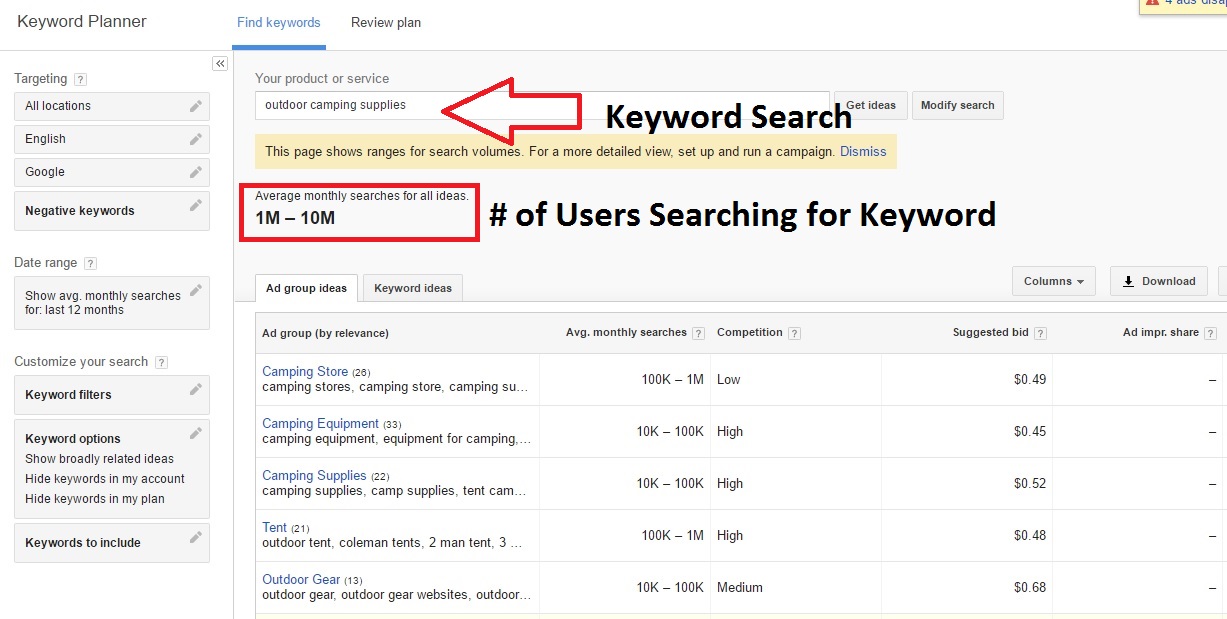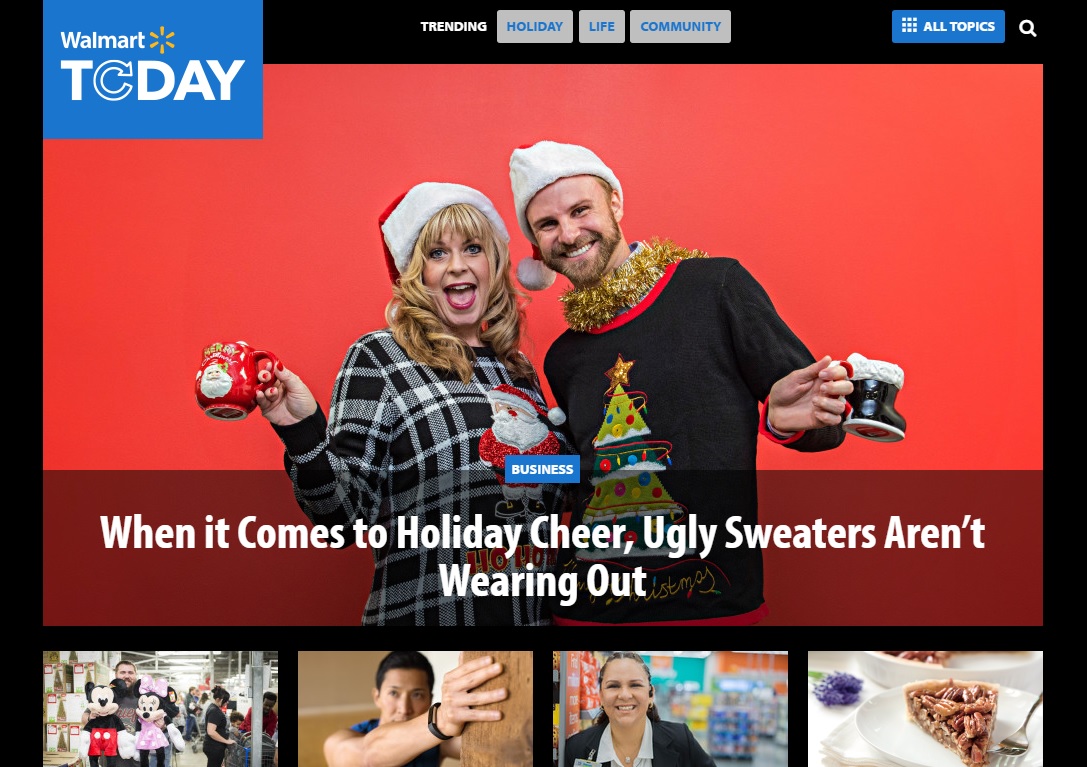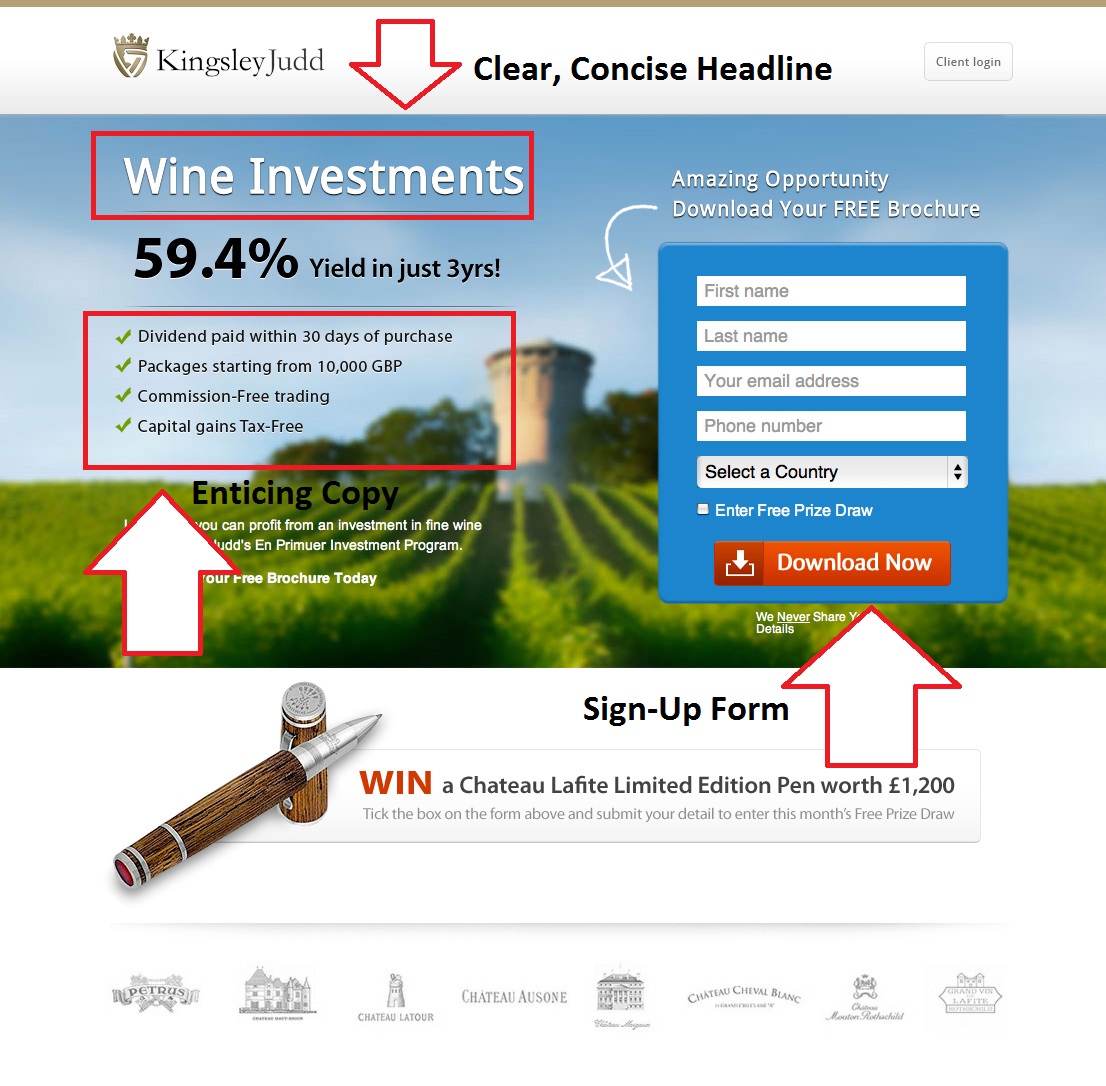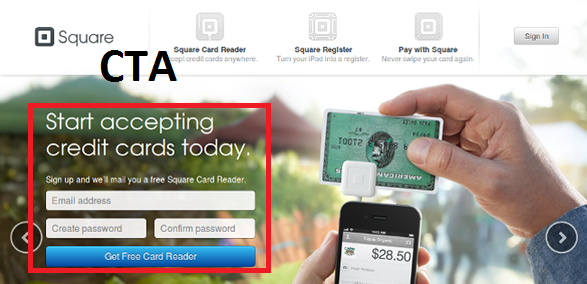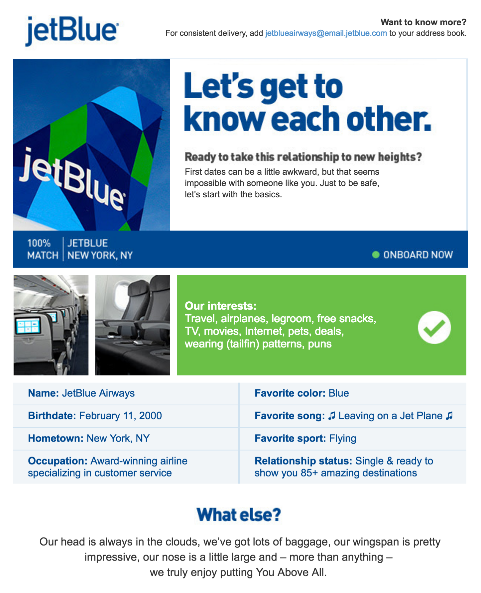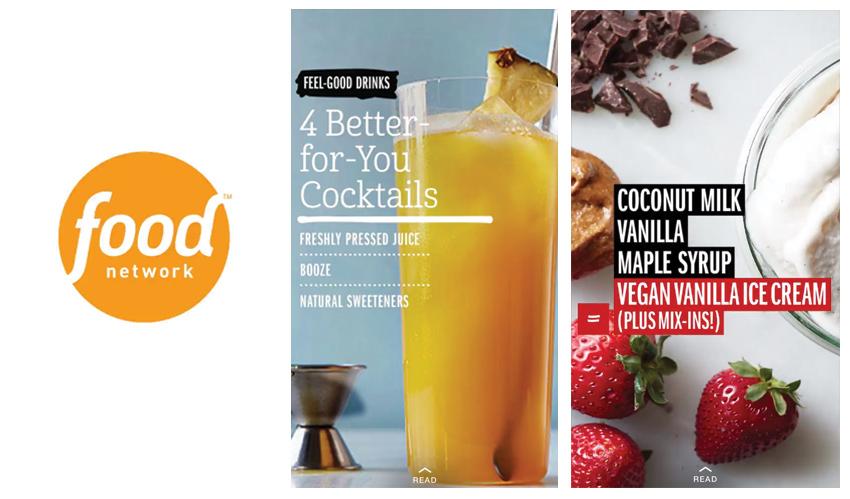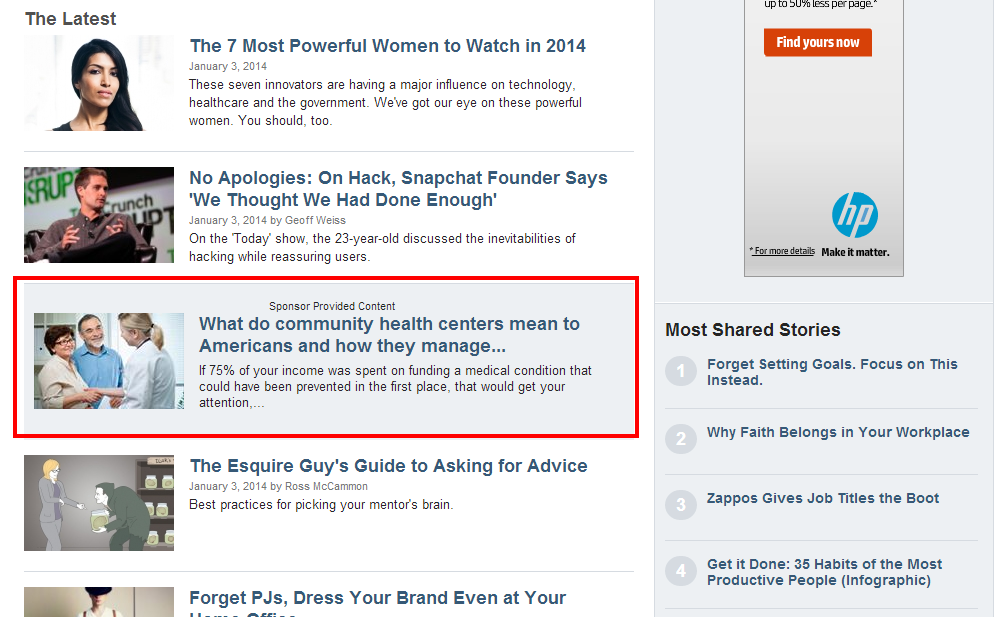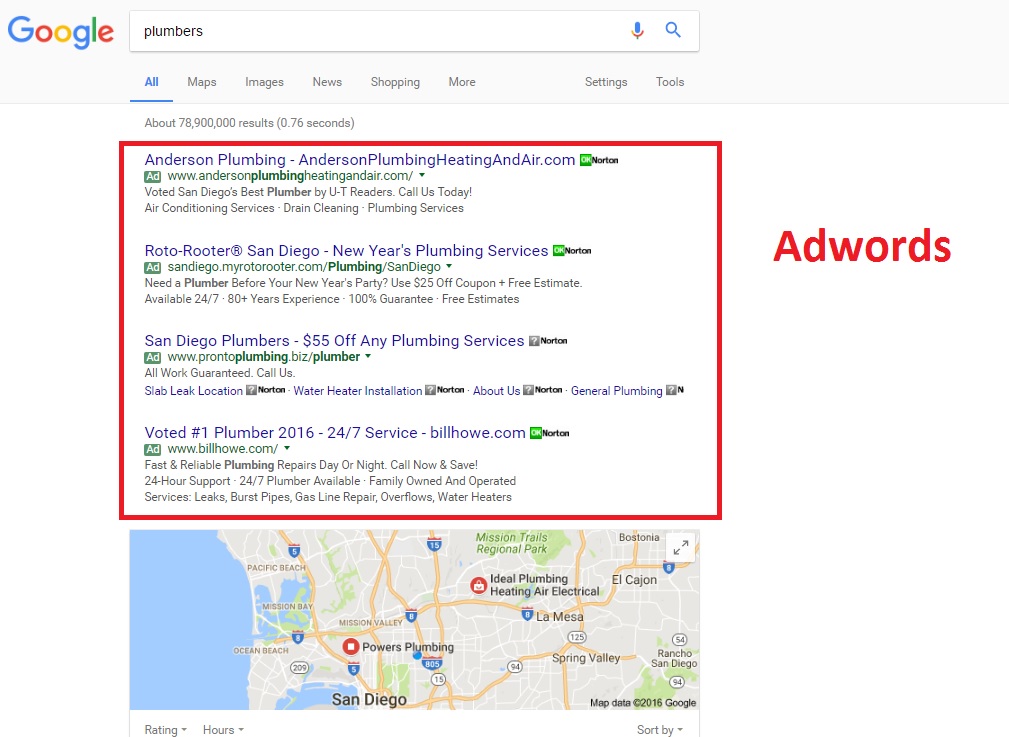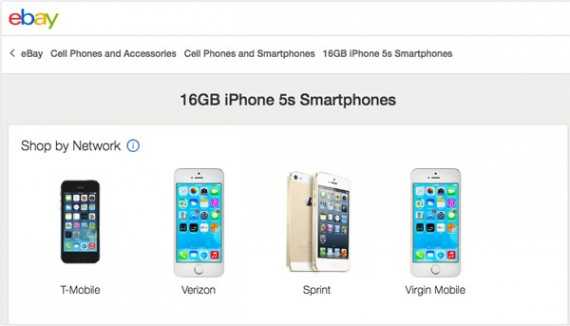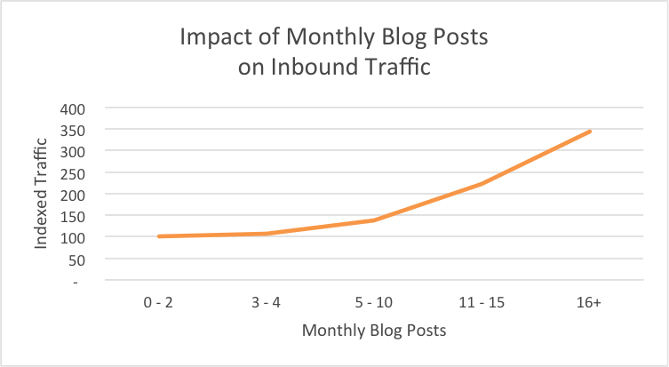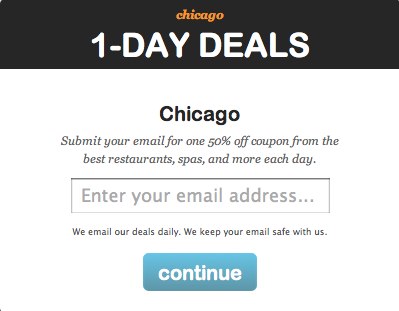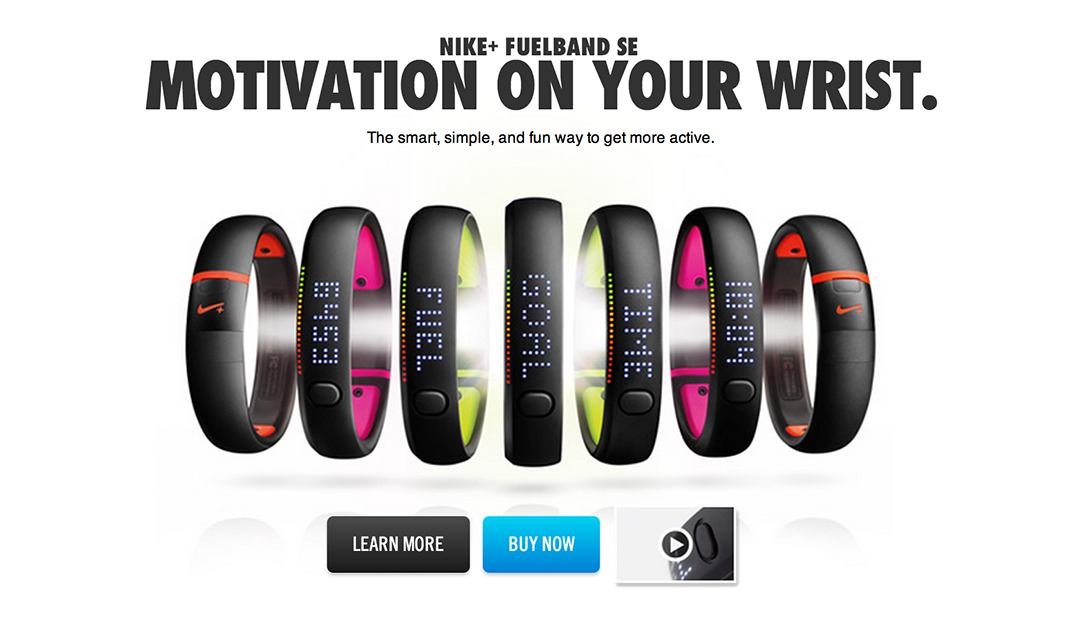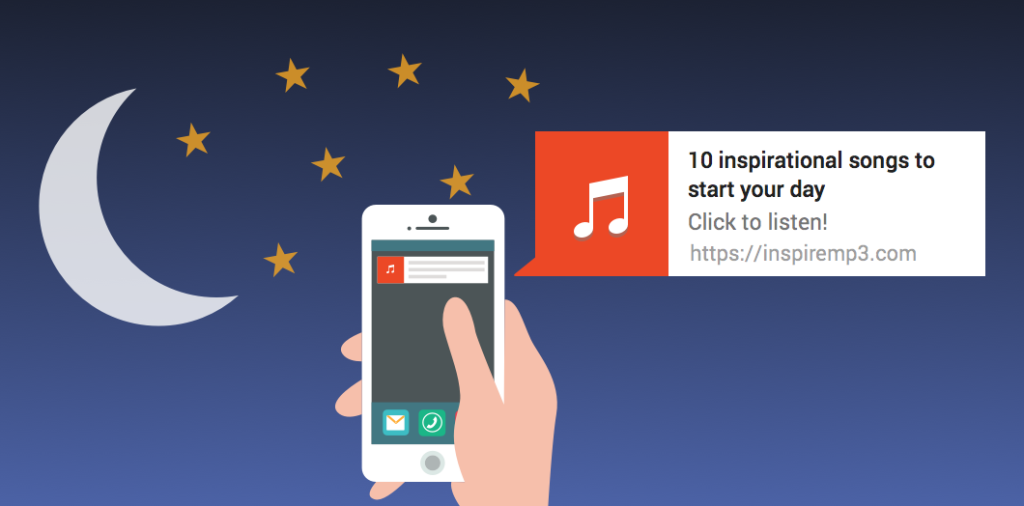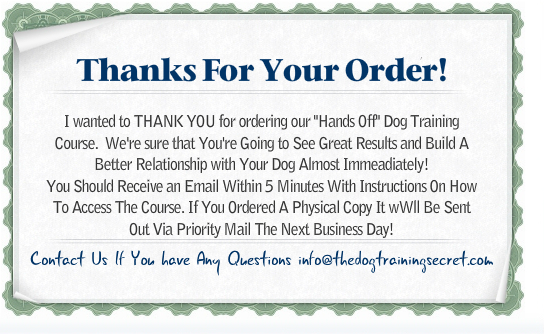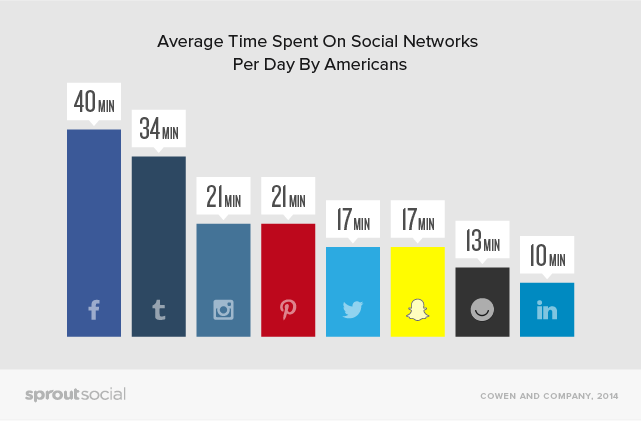30 eCommerce Marketing Tips: How To Increase Sales To Your Site
eCommerce Marketing Tips to Boost Your Business
Did you know that it takes six to eight interactions, on average, to generate a viable sales lead? Contrary to popular opinion, emotional purchases are few and far between. Today’s marketing and sales strategies must speak to changes in consumer behavior: With access to so much information, your customer shops around much more than before. To account for a longer sales cycle, we organized a number of eCommerce marketing tips from different parts of the sales funnel, taking you from the “attraction” phase to adding value after the sale and beyond.
But before we take you through each of the ecommerce tips, let’s explore the four stages of your sales funnel.
What Is The Sales Funnel?
Making an individual sale is great, but sales funnels represent a much larger and more critical process for marketers. Your sales funnel doesn’t start once a customer clicks “Buy Now.” The goal is to cultivate long-lasting relationships that will see visitors turn into leads, leads into customers and customers into repeat business time and time again. A well-designed sales funnel focuses on building relationships long before the initial purchase is made. We call this process The Buyer’s Journey.
Your Sales Funnel – The 4 Stages
This journey involves four stages—attract, convert close, and delight.
- Attract
- Transforming strangers into potential clients requires that you present your brand in an attractive light. Before proceeding, ask yourself:
-
- What characteristics of my brand will audiences identify with?
- Where is my target audience likely to congregate?
- What are the best channels to reach them?
-
- These answers will better inform your inbound marketing decisions regarding the areas where you might “pull” visitors into your funnel, including social media, email marketing, online advertising and Search Engine Optimization (SEO).
- Transforming strangers into potential clients requires that you present your brand in an attractive light. Before proceeding, ask yourself:
- Convert
- Turning strangers into visitors was the first milestone. Now your goal is to transform these visitors into leads, and ultimately purchasers. For this stage, your focus should be on improving your website.
- User experience, ease of navigability, and creating concise calls-to-action on optimized landing pages, blog posts and product pages are your main priorities.
- Overtime, you are showing leads the merit of your product, and convincing them how it will positively impact their lives.
- Close
- Now it’s time to turn those leads into actual buyers! But not so fast. First, we must nurture them as we would a romantic relationship—only instead of chocolates and roses, we use personalized emails, sales alerts, and social media updates.
- Using lead scoring, we determine which visitors are most likely to purchase. We also determine which items they will purchase to more specifically direct our targeting efforts.
- The end of this stage is the “close,” or the sale itself.
- Delight
- Our sales funnel isn’t over just yet. As important as it was to close the sale, we want to keep our customers happy so they back for more.
- According to an eConsultancy study, your probability of selling to an existing customer is 60-70%, whereas the probability of selling to a new prospect is a meager 5-20%.
- Successful retention efforts are like stepping stones towards scaling your brand. They stimulate your growth through referrals, increased social media following, and become de facto feedback loops.
Creating Content For Your Customers
Now that we’ve established the four stages of your sales funnel, it’s time to implement the appropriate content for each stage. To do this, let’s create a content marketing strategy that’s geared specifically for your products and target audience. As great as your products are, they won’t literally sell themselves. Good content is needed every step of the way to capture your brand’s message and articulate it to customers.
Content marketing costs 62% less than traditional marketing and generates 3x as many leads. For those who like saving money, content marketing is worth embracing. But it does require a significant amount of market research to pinpoint your target audience, and then demands time to create effective content that will resonate with your buyer personas.
The type of content you’re developing for each sales stage will vary based on the purpose of each stage. Let’s discuss.
Content Marketing By Sales Stage
Sales Stage #1: Attract
Keywords
Attracting strangers to your brand requires a content marketing strategy that is inextricably linked to your SEO. You’ll start by researching keywords, through a tool like Google Adwords’ Keyword Planner. Even though the Keyword Planner tool in Google Adwords is designed to be used in conjunction with your PPC advertising campaigns, you don’t have to be runnings ads in order to research keywords.
Let’s say you’re selling “outdoor camping supplies.” You can type that phrase into the tool, and you’ll be presented with data such as “Avg. monthly searches,” “Ad group ideas,” and “Suggested Bid” rates for each keyword group or phrase.
When choosing the right keywords for attracting our target audience, we want to take into account volume (how many times searchers type in the keywords) and competition (how many other websites in our niche utilize the same keywords).
The keywords you’ll use within your content will vary in length. It’s important to include some long tail keywords (3-5 word phrase) and some short tail keywords (1-3 word phrase). Examples of long tail keywords would be “men’s winter athletic gear,” or “best amber ale craft brewery.” Although they are more targeted phrases that have a lower search volume, long tail keywords bring forth more dedicated customers. Conversely, short tail keywords tend to be broader but have a higher search volume.
Blog
Maintaining a blog is one of the cheapest, yet most effective ways to infuse new content into your site. According to HubSpot, 82% of marketers who blog see a positive ROI from their inbound marketing efforts. Blogging gives you a vehicle for explaining your products to potential customers while improving your SEO.
Whether it’s a ‘how-to’ post, a ‘product recommendations’ post, or a ‘behind-the-scenes of my company’ post, use this opportunity to ingratiate “strangers” into likely customers.
It’s important that your blog expresses your brand’s unique voice, but it should do so while utilizing strategically placed keywords. Let’s take an example from Walmart—yes, even the department store giant runs a blog.
The title of their focus piece is “When it Comes to Holiday Cheer, Ugly Sweaters Aren’t Wearing Out.” From this title, we can deduce that one of their keyword phrases is “ugly sweaters,” and another might be “holiday cheer.” Walmart would ensure that each blog post places targeted keywords into the Title Tag for the page, as this tells Google’s algorithm what their content is about. In this example, the above post would be given a higher ranking on SERPs for search queries containing “ugly sweaters” or “holiday cheer,” thus driving leads interested in purchasing “ugy sweaters” into your sales funnel.
Mobile Optimization
Today, more than half of internet users are on a mobile platform. To attract more visitors, your content has to be optimized for this smaller screen. Responsive web design is an integral part of an eCommerce site’s mobile strategy, as it can determine whether a person completes your sales funnel—but another important facet is the quality of your content, both written and visual.
A studio apartment is smaller than a two bedroom town home, but with a better interior design plan, the studio can look more fanciful and appealing than the larger space. The same holds true with mobile content. Just because it’s viewed on a more condensed screen, doesn’t mean the quality of your content should be sacrificed. Through concise writing and expressive visuals, the quality of your content can actually become enhanced on the mobile platform, helping your products become more marketable.
The term “copywriting” is often taken for granted, but on the mobile platform it means everything. Because mobile sites emphasize catchy headlines and one-liners as opposed to large chunks of scrolling content, solid copywriting skills are a necessity. If you can turn a stranger into a potential buyer in only a few words, you’ll have a leg up on the competition.
Sales Stage #2: Convert
Once you’ve set the groundwork with solid SEO, an updated blog, and mobile optimization, it’s time to create content that will guide your visitors further along the sales funnel. Your focus should lie in producing quality copy that yields convincing calls-to-action.
Landing Page
When visitors land on your site, how are they greeted? A landing page is your customer’s first impression of your site, but it’s also a great indicator of what they should expect throughout their purchasing process. If content on a landing page is unclear, or the loading time is too slow, your leads will vanish quickly. You want them to stick around long enough to at least fill out a form, sign up for a newsletter, or be presented with a call-to-action.
Optimizing your landing pages also means you should add more of them. Companies see a 55% increase in leads when they increase their number of landing pages from 10 to 15. More impressively, companies with 40+ landing pages get 12 times more leads than sites with 5 or fewer. We’re not saying that more is necessarily better. It will always depends on your products and and the quality of your content, but it’s unmistakable that high quality landing pages will drive more visitors to your site and, at an average conversion rate of 2%, online sales is a numbers game.
Call-To-Action
CTAs provide the missing link between a prospective customer becoming an actual customer. Your content needs to present the task at hand, but present it in a digestible way, making the consumer feel like you’re doing them a favor.
If you’re marketing a service, your CTA could be as straightforward as, “Make An Appointment Today.” Or if you want improve the offer, “Get 50% Off Your First Visit… Book Today.” Each business model will implement a different kind of offer to convert their leads. Some CTAs may present free ebooks, while others offer free consultations. The goal of this content is to drive brand engagement and increase the likelihood of future sales.
Mobile payment app, Square, really nails their call-to-action. They emphasis how customers can use their product immediately (“Start accepting credit cards today”), and they punctuate that deal by having their sign-up button read, “Get Free Card Reader.” If there are two things customers can’t refuse, it’s the notion of getting their product “today,” and receiving part of it for “free.”
Sales Stage #3: Close
If the entire sales funnel represents a journey all the way up and down Mt. Everest, you’re now approaching the peak; but there’s still some climbing to do when nurturing your leads into actual paid customers. The content you inject should be geared towards nurturing these quality leads, making them feel a connectedness to your brand that will commit them to a sale.
Emails
Plain and simple, an email marketing component to your content strategy averages an ROI of $38 for every $1 spent. A 38-to-1 return is impossible to sneer at. Well-written, friendly, and engaging emails can produce big wins for your brand and keep your customers returning for more products. In email, you are reaching your leads through a channel they will access everyday. Whether or not they read through your entire content (emails have only a 3-8% CTR), they will at least be presented with your business on a regular basis.
Your content should present leads with actionable offers without bombarding them, plus a little humor wouldn’t hurt. Let’s take a look at JetBlue’s email strategy.
This is a portion of a JetBlue email sent to previous and current customers. Notice the extremely witty copy? From top to bottom, the content is light, yet it implies the need for action on the part of the reader. The metaphor that a B2C relationship is akin to a romantic relationship is really quite apt. JetBlue really is trying to “get to know” their clients better by inviting them to join as TrueBlue members. Even though this particular example is directed at past and current customers, it shows us the importance of clever copy when producing emails.
Sales Alerts
Emails with sales alerts can give your leads a sense of urgency, causing many to commit to a purchase right away. Your content has to present the offer by relating this imperative to the prospective consumer. It begins with the email subject line.
Since it’s the first line the recipient sees, it’s the most important piece of text in your email. Good subject lines are short and should include a clear reference to the sale (even the word “sale” itself is good to throw into your subject line). According to the Email Institute, subject lines that evoke a sense of urgency and exclusivity generate a 22% higher open rate.
Hopefully your persuasive copy did the job of getting leads to convert. Now it’s time to turn these purchasers into returning customers.
Sales Stage #4: Delight
Going back to our mountain climbing analogy—you have officially reached the summit, taken a deep exhale, and it’s time to start your journey back down. But although this may seem like the easiest portion of your sales funnel, it still requires an influx of grade A content. You don’t want customers going away thinking you have nothing else to offer them.
Emails – Appreciation and Promotion
After converting a sale, many marketers elect to go with a nicely crafted Thank You email. This is a thoughtful gesture intended to show gratitude towards your customer and make them more likely to return. Within the content of the message, you might want to include an additional offer they can pursue if they liked your service. It’s the classic, “To show our appreciation…” followed by a discount or suggestion for their next order.
These follow-up emails should also encourage sharing and promotion of your brand. Kindly urge customers to follow your social media accounts, share links to your blog, and leave feedback about their buying experience.
Customer Testimonials
The easiest content you can create is that which is written by your customers. Customer testimonials have the highest effectiveness rating for content marketing, at 89%. Positive reviews on your products are a hugely important means of attracting new customers and converting them. Testimonials create an emotional appeal for your brand, increasing trust and reputability. As new testimonials roll in, you’re getting a) free promotion, b) fresh content, and c) feedback about your product to improve its quality.
Now that we’ve examined the importance of content marketing throughout your sales funnel, let’s touch on the channels you should explore to drive traffic.
Targeted Traffic Sources
Driving visitors through your sales funnel is a lot easier with great content, but in order for leads to see this great content, you must target the right traffic sources. Unfortunately, just because you create it doesn’t mean they will come. There are many ways to approach a prospective lead, but the following places might be your best bets.
- Social Media
It’s obvious that in 2017, social media is where the internet congregates. Unfortunately, many brands still miss the mark by just creating a standard Facebook account and expecting users to find them. It doesn’t work that way. Social media is a cluttered space, requiring persistent targeting efforts on the part of brands.
Your social media presence should follow your audience. Let’s pretend you’re a retailer catering to late teens and young adults. Since studies indicate Snapchat is among the most popular apps for this age group, it’s an avenue you should explore. This isn’t to say that other channels like Facebook, Twitter, or Pinterest aren’t important, but again, it’s about pinpointing your traffic.
- Organic Search
Getting organic leads to your site is every marketer’s dream come true. With a clear SEO strategy in place, you can make this dream a reality. Search engines will reward you with free traffic if your site publishes great content and adheres to SEO best practices. The trick is, can you select keywords that attract your target audience? Finding the right focus keywords can be difficult at first. But when done correctly, your organic search totals will skyrocket. An Outbrain study shows that search remains the # 1 driver of traffic among content sites, and makes up at least 30% of all traffic to eCommerce sites. 30% is no chump change.
- Paid Search
The other side of the coin can also be an effective traffic driver, but it requires financial output on your end. SEM, or search engine marketing, is a great way to target specific groups of users and be placed at the top of search engines. Of the many platforms you can use, Google AdWords is typically the most popular option due to advantages like location targeting, campaign-level audience listing, and campaign measurability.
- Online Advertising
Outside of search engines, there are several other paid platforms for pay per click, native and display advertising. Services like Outbrain, Yahoo!, and Facebook ads allow you to implement low cost campaigns which are served across an array of online publishers. Typically placed within a “sponsored ads” section on sites, customers know they’re being advertised to, but many will still click depending on your image and persuasive copy.
For more discreet advertising, try native ads. These integrate seamlessly within a site’s natural content flow, giving the illusion that your ad is organic content.
Like investing in a stock portfolio, it’s important to diversify your traffic sources. Deviating between paid and non-paid options will keep things cost effective and help you bring in a wider array of leads.
Now that we’ve discussed the significance of content marketing and explored several different targeted traffic sources, here are the 30 eCommerce tips for guiding customers through your sales funnel and boosting overall sales.
eCommerce Marketing Tips By Sales Stage
Sales Stage #1: Attract
#1 – Target Your Audience
Who’s buying your product? How can you reach them? These two questions form the nucleus of your lead targeting strategy, and help point you in the right direction. There are many comprehensive audience targeting tools to help you discover leads, from Google Adwords’ Keyword Planner tool to BuzzSumo’s social search options. Target your customers based on keywords, demographics, social media networks, or past search habits to harvest an audience with a high conversion rate.
#2 – Select Keywords
Keywords govern every aspect of your content marketing and audience targeting processes. Entire websites are built around certain words and phrases that represent your products and the needs of your audience. Compile a list of short- and long-tail keywords associated with your brand and products, then determine which are your primary keywords and which are your secondary. If you’re operating an automotive shop in Los Angeles, you might select “auto mechanics,” and “automotive shop” for short-tail keywords then, “auto mechanic California,” “auto repair shops California” for your long-tail keywords.
#3 – SEO
All that keyword research will lay the groundwork for your SEO strategy. Title tags, header tags, proper URL structures, optimized images (with alt tags), videos, and regularly updated content will help you climb the search engine rankings. In the case of your eCommerce store, product descriptions will be hugely important. It’s amazing how many stores miss the mark by either failing to infuse the right product-specific keywords, or failing to include a description at all. Off-page SEO techniques should also be implemented during this time, such as your social media marketing strategy as well as outreach to other publishers for link building. SEO is primarily about web authority—as you climb the SERPs you’ll prove to be a credible resource for your audience’s eCommerce needs.
#4 – SEM
SEO is the organic way to attract visitors to your site, whereas SEM (Search Engine Marketing) is the paid traffic route. Yes, it requires some financial output on your end, but it gives your site prime positioning on search engines. There are many ad platforms to choose from, but for the most ubiquitous reach try launching some Google AdWords campaigns. Adwords will position your ads on a variety of places throughout their massive network—these locations include Google’s search engine result pages, YouTube, Gmail, or any of the several thousand publishers that serve ads on their sites.
#5 – Mobile Optimization
The rise in mobile users means retailers have an important task in front of them—ensure that each page is responsive, user-friendly, and readable on mobile devices. One innovation that’s helping you get there is the development of Accelerated Mobile Pages, or AMPs. eBay has already begun using them on their mobile site, and other brands are expected to follow.
AMPs are given priority placement in Google’s search engine results, appearing at the top of the page. Mobile optimization encompasses your on-page SEO efforts.
#6 – Creating a Content Release Schedule
Content marketers are always wondering, “‘How often should I release new content?” Well, it’s less about how OFTEN you release new content and more about how CONSISTENTLY you release new content. Create a schedule for each week and stick to it. Even if you aren’t releasing new products or product-related updates that week, make sure to update your blog and social media regularly. Google Calendar should be your best friend.
#7 – Blogging
As Hubspot puts it, “blog early, blog often.” Companies that blog over 16 times per month receive more indexed traffic and more inbound leads. Blogging is an effective tool to educate and inform your prospective buyers about product offerings, and help guide them through your sales funnel. 46% of users read reviews and blogs before purchasing online, while at least 13% of consumers cite blogs as the main source inspiring a purchase.
#8 – Video Producing
Prospective customers respond best to visual marketing. In a 2014 survey, retailers cite 40 percent increases in purchases from video content. In general, 51.9% of marketers name video as the type of content with the best ROI. This doesn’t mean you have to be Steven Spielberg. Video content can be as basic as product descriptions, how-to’s/instructions, customer testimonials, vlogs, or Q&A sessions. You’re simply trying to give your brand a face—and while you’re at it, improve CTRs.
This element of branding ties into our next point.
#9 – Social Media Presence
84% of online shoppers refer to at least one social media site for advice on what to purchase. Set-up a Twitter, Facebook, Pinterest, etc., and make sure you’re posting regularly. Through WordPress, you can schedule content to be posted on your social media accounts throughout each day. In addition to posting your own content, “like” and “share” other users’ content and present your brand as a solution to their needs. Social media users will only follow your profile if you’re both active and helpful. It doesn’t hurt to build a snazzy hashtag game either.
#10 – Work With Affiliates
The last step of the attraction phase involves building your affiliate marketing network. Reach out to fellow brands who would be willing to market your products on their site. Although you’ll owe them a modest commission for each conversion you receive, affiliate relationships are a great way to build an audience through established publishers. In return, you can promote their products on your site for a similar commission fee. When choosing a program, look at your prospective audience. If you’re reaching a client base that would typically purchase your kinds of products on Amazon, then the Amazon affiliate network is the way to go. In addition to affiliate networks, there are also many in-house affiliate programs hosted by advertisers. Some of these sites, like Clickbank, cater to eCommerce sites that sell digital products.
Sales Stage #2: Convert
#11 – Landing Page Optimization
Reaching out to strangers is the first step, but getting them to engage with your site is another challenge. In the eCommerce community, bounce rates are almost 4 times higher on smaller brand sites over larger ones. This is largely due to returning visitors on the bigger sites—customers who have made purchases before and know exactly what they want. It also has to do with the site’s landing pages. Do they load quickly? Do they lead potential customers closer to making a conversion? For eCommerce sites to excel they must utilize smart, effective landing pages that are easy to navigate and will lead customers through the sales funnel. There are great tools out there that offer comprehensive analytics data for your landing pages. VWO, Unbounce, and Optimizely are three industry favorites for guiding a site’s landing page optimization efforts.
#12 – Email Sign-Up
Asking visitors to sign-up for your email list is the best way to nurture a relationship that will get you more conversions, and eventually lead to returning customers. It’s no wonder that email serves as the primary channel for lead generation for 89% of marketers.
#13 – Present Special Offers
A popular move is to include a FREE offer to visitors who sign-up for your email list. If you’re selling digital products, you can include a free eBook. For sellers of physical products you can offer a discount on their first order. The point is NOT to confront visitors with a drab and boring call-to-action like, “Please Sign-Up For This Email List.” Special offers will incentive visitors to engage with your brand, and encourage them to spread the word among friends. Thankfully, there’s a psychological trick at play here known as the “Fear of Missing Out.” If people think they’ll be missing out on deals that can save them money, they’ll instinctively want to sign-up for your email list.
#14 – Call-to-Action
Selling any product is about emphasizing its imperative use to the customer. Effective CTAs should leave your leads no other option but to click “Buy Now.” It comes down to copywriting. Are you able to write concise headlines? If not, then it’s time to practice. There are many resources to consult for inspiration—just browse through any large brand’s Twitter feed to see a slew of examples.
Nike:
The sports giant loves using buzzwords like, “motivation,” “strive,” and “success” throughout their ad copy. It’s an intelligent appeal to the competitive nature of their athletic audience.
Sales Stage #3: Close
#15 – Optimize CRM
This is when you make your final push towards earning that conversion. Your Customer Relationship Management approach entails that you hit it home with your leads through proliferation of email, social media, and on-site content. Validate their curiosity in your brand by producing high value material and building trust. Although you want to focus on leads that are most likely to convert, showing favoritism towards customers is a surefire way for your CRM to go down the tubes. When using social media it’s okay to reply to customer inquiries, but be careful not to mention specific leads on a repeated basis.
#16 – Segment Email List
The one place where it’s okay to have favoritism is within your email list. Segmenting your email list into categories like demographics, product interests, purchase history, location, and livelihood can help increase your understanding of your audience’s needs—leading to more conversions. MailChimp found that brands who segmented email lists increased their open rates by close to 19%. Customers want to feel like you’re tapping into their specific needs, rather than blasting out generalized emails offering products they have no interest in.
#17 – Personalize Emails
From our segmented lists, we want to start sending emails that are increasingly specific to customers. A great way to do this is by including the customer’s name at the top of the email message, making it seem less like a form letter and more like a direct message. There are many email marketing software options that allow you to do this. Remember, it’s not about flooding a customer’s inbox—it’s about sending fewer, but better targeted emails. Personalized emails can include offers and discounts based on the customer’s product search history.
#18 – Push Notifications
Push notifications are a relatively new phenomenon that’s taken off largely due to the surge in mobile shopping. They are a notification option that customers can select, sending them updates directly into their browser. The advantage of push notifications is that they appear in real-time, without relying on the customer to open his or her email inbox. As a result, open rates for push notifications are 50% percent higher than for email. Because of their immediacy, you want your push notifications sent to customers who can take action right away. Segment your push “subscribers” by their location to ensure timezone considerations are being honored.
#19 – Risk Free/Trial Policy
It’s the oldest sales trick in the book, but it works. Offering first-time customers a risk-free or “100% Money Back Guarantee!” might be just enough to turn those would-be buyers into actual purchasers. By lowering their barriers of entry, you are welcoming in a larger pool of customers who see your product as a win-win for them. If they like it? Great. If they don’t like it? Great, they’ll keep their money. More often than not, the first outcome is what happens.
#20 – Other Incentives for First Time Customers
There are plenty of other ways to turn first-time customers into returning customers. One is by offering them a “hidden” offer—something that’s exclusive “only” to them. It could be a way to unlock hidden features or product listings on your site, or maybe an opt-in to join an exclusive email list. Exclusivity is a great psychological trigger used to increase the interest level of customers.
#21 – Customer Testimonials
What makes a profitable Amazon.com seller? Reviews, reviews, reviews. Customer testimonials are the driving force of the eCommerce industry today, directing the ultimate purchasing decisions of a majority of customers. A MarketingLand survey indicates as many as 90% of customers use online reviews to influence their buying decisions. In turn, reading these reviews is important for any eCommerce site looking to improve their products.
#22 – Optimized Purchase Page
The last thing you want is for customers to work their way through your sales funnel only to get tripped up by a slow, unresponsive purchase page. Make the buyer’s options clear and optimize the page for desktop AND mobile platforms. Any slow down or break in clarity could jeopardize your conversion.
Otherwise, congratulations! You’ve made the sale! Now here’s how you keep that valued customer.
Sales Stage #4: Retain
#23 – Thank You Email
Acknowledgement of a customer’s purchase is a direct way to show gratitude, and being thankful for your customers is crucial to continued success. You want these customers coming back for more, so making them feel like they just ordered from an AI machine isn’t a smart way to go. Again, email marketing software will allow you to automate a “Thank You Email” to converted customers. It’s quick and easy to set-up and it will gain you some nice brownie points down the road.
#24 – Ask to Leave Feedback
How can you make the buying experience better? Ask a customer. We often lose objectivity in our brand, which is why it’s so important to get feedback from an objective source. It’s like when musicians record 300 takes of a track; by then, they’ve heard the song so many times that they’re no longer an objective source. The same is true for your sales funnel. By this time, you’ve put in so much effort that it becomes difficult to know how the process really works.
#25 – Customer Support
Customer service has become an afterthought for many eCommerce stores. Don’t let that happen to yours. Offering your purchasers a helping hand is easier now than ever before. You can produce instructional video content on YouTube or even shoot a live video chat where customers may ask questions. Then of course there’s Twitter mentions, Facebook posts, and many other ways for customers to get a hold of you. On your end, you can reach out with an offer of customer support via email.
#26 – Remind Buyers To “Like” and Share
Give your brand credibility by having customers “Like” your Facebook page and share it with their friends. Users spend an average of 40 minutes per day on Facebook, so chances are they’ll take the time to interact with your business page if it’s shared to them.
#27 – Present More Calls-To-Action
Send emails containing suggestions for future purchases. Even if they decline, you want to keep your customers continually engaged with your brand. Inform them of upcoming events, sales, or new product releases.
#28 – Post More Offers On Social Media
Give customers a reason to “Like” your page by keeping it updated and ripe with new offers and deals to explore. Incorporate photos and videos to keep audiences more visually enthralled.
#29 – Re-examine Keywords
While your focus during this retention phase is largely on your customers, it’s also an opportunity to review your keyword usage. Which short- and long-tail keywords worked and which ones weren’t as effective? Keywords are constantly changing. Just because a particular group worked the first time, it doesn’t guarantee the same results will occur next time through your funnel. Reexamine your keyword list and make necessary adjustments based on your experience.
#30 – Nurture B2C Relationships for SEO and Leads
Reach out to customers and affiliates to help you build backlinks and increase lead generation. Thankfully, it only takes a few satisfied customers to amplify your brand tenfold and beyond. The increase in authority will contribute to a higher search engine ranking which will increase your organic leads.
Measuring Success
Beyond the dollar amount, there are a couple factors in measuring the success of your sales funnel. Firstly, it’s about conversion rate. What percentage of your leads made it through to that initial sale? A high conversion rate trickles down to make every other statistic look better, but there’s yet a more important metric to note—how many conversions are repeat customers? If the answer is, “not many,” then there might be a kink in the retention stage of your sales funnel. Returning customers are the lifeblood of any eCommerce store. If your sole focus is the initial sale, there’s really no need to put any work into your CRM strategy.
Then there’s the CLV, or customer lifetime value. This measurement is somewhat hypothetical, but it aims to determine the net value of a customer’s relationship with your brand over the long haul. There’s quite a bit of math involved as you can imagine, but it instills the principle that returning customers are the ones who will determine the success or failure of your site.
Conclusion
eCommerce success is about nurturing relationships that begin from organic and paid traffic channels. Your sales funnel should be thought of as a guided tour through a museum—you being the curator. Although your mission is to increase conversions, your larger goal is to get the same people coming back for more. A funnel implies there’s an end point, and the process slowly fizzles out—but your sales funnel should be continuous, picking up new customers alongside those returning. Of course your goal is an increase in sales, but the ultimate goal is an increase in long-term customer relationships.




